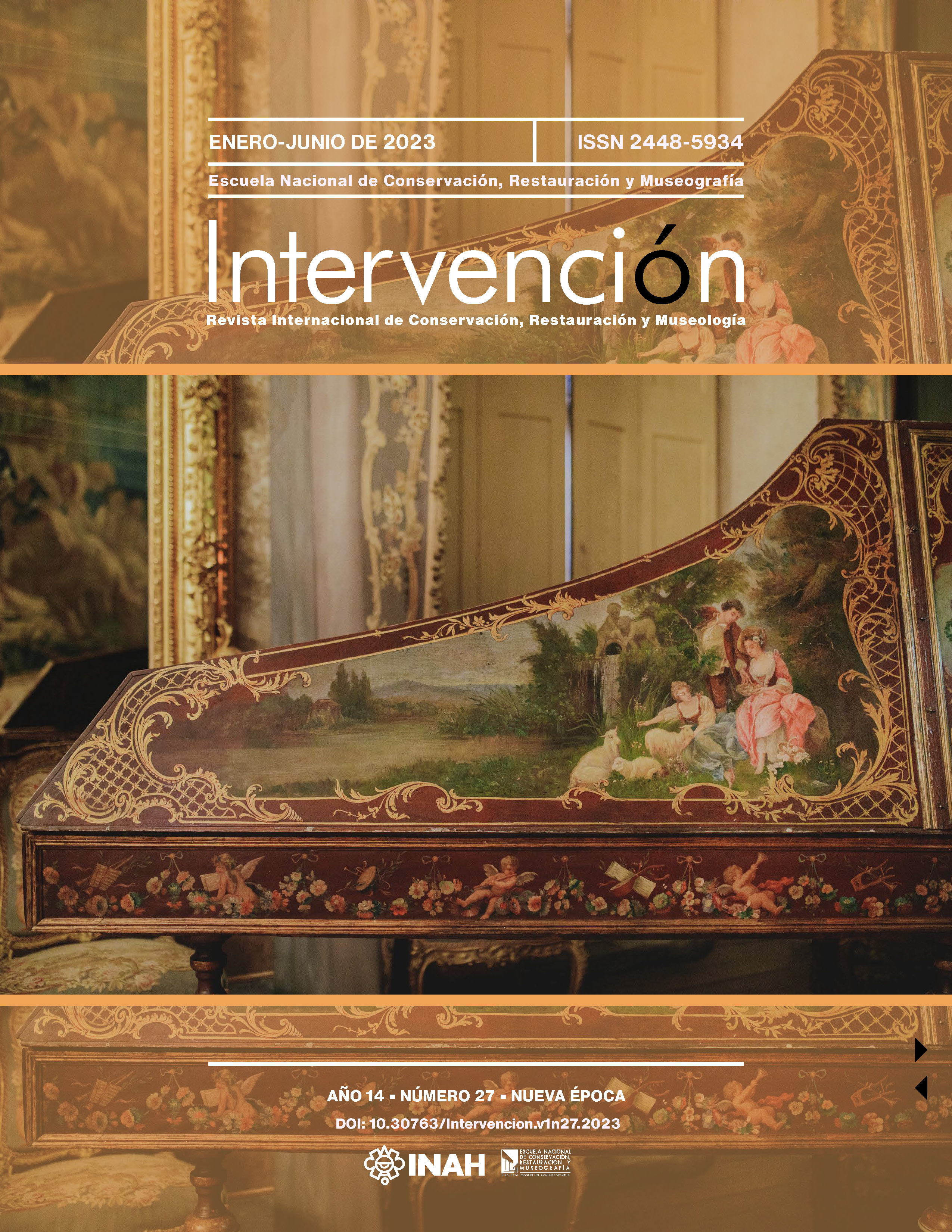Research into Wood Types and Geographical Origin of the Harpsichord at the Museo Casa de la Bola, Mexico
DOI:
https://doi.org/10.30763/Intervencion.280.v1n27.59.2023Keywords:
woods, harpsichord, anatomy, construction, ItalyAbstract
This article takes a deeper look at the harpsichord in the collection of the Museo Casa de la Bola, a unique example of its kind in Mexico City. Since the origin of the instrument is unknown, we first need to determine its geographic provenance. To obtain this information a thorough study was carried out to analyze, on the one hand, the structural characteristics of the harpsichord by comparing it against those referenced in the existing literature and, on the other, the microscopic anatomy of the wood by taking samples for the analysis of its cellular structures. The results show that both aspects correspond to Italian harpsichord building traditions during the Baroque period, particularly those associated with the city of Naples.
Downloads
References
Chirico, T. (2009). New Information about Harpsichords and Harpsichord Makers Employed in Rome by Cardinal Pietro Ottoboni and His Father Antonio. The Galpin Society Journal, 62, 101-115.
Coelho, V. y Polk, K. (2016). Instrumentalists and Renaissance Culture, 1420–1600: Players of Function and Fantasy. Cambridge University Press.
Coster, J. (2019). History and Construction of the Harpsichord. En M. Kroll (Ed.), The Cambridge Companion to the Harpsichord (pp. 2-30). Cambridge University Press.
Germann, S. (2007). Decoration. En I. Kipnis (Ed.), The Harpsichord and Clavichord: An Encyclopedia (pp. 116-146). Routledge.
Hubbard, F. (1965). Three Centuries of Harpsichord Making. Harvard University Press.
IAWA. (1989). List of Microscopic Features for Hardwood Identification. IAWA Bulletin, 10(3), 219-332.
Jensen, D. (1998). A Florentine Harpsichord: Revealing a Transitional Technology. Early Music, 26(1), 70-85.
Koster, J. (2019). History and Construction of the Harpsichord. En M. Kroll (Ed.), The Cambridge Companion to the Harpsichord, (pp. 2-30). Cambridge University Press.
Kottick, E. (2003). A History of the Harpsichord. Indiana University Press.
Kribs, D. (1968). Commercial Foreign Woods on the American Market. Dover.
Mariño, E. (2014). Estudio de la Tecnología, Historia y Significado Cultural del Clavicordio del Museo Nacional del Virreinato, Tepotzotlán, Estado de México [tesis de licenciatura]. Escuela Nacional de Conservación Restauración y Museografía “Manuel del Castillo Negrete”. Martin, D. (2012). The Art of Making a Harpsichord. Robert Hale Limited.
O’Brien, G. (2009). The Single-Manual Italian Harpsichord in the Royal College of Music, Londres, Cat. No. 175: An Organological Analysis. The Galpin Society Journal, 62, 55-99 y 194-195.
O’Brien, G. y Nocerino, F. (2005). The Tiorbino: An Unrecognised Instrument Type Built by Harpsichord Makers with Possible Evidence for a Surviving Instrument. The Galpin Society Journal, 58, 184-208, 232-235.
Schweingruber, F. (1990). Anatomy of European Woods: An Atlas for the Identification of European Trees, Shrubs and Dwarf Shrubs. Paul Haupt.
Strohm, R. (1991). Die private Kunst und das öffentliche Schicksal von Hermann Poll, Erfnder des Cembalos. En M. Fink (Ed.), Musica privata. Die Rolle der Musik im privaten Leben. Festschrift zum 65 (pp. 56-66). Geburtstag von Walter Salmen. Musikleben des Spätmittelalters in der Region Österreich.
Wraight, D. (1986). Vincentius and the Earliest Harpsichords. Early Music, 14(4), 534-538.
Additional Files
Published
How to Cite
Issue
Section
License
Copyright (c) 2023 Instituto Nacional de Antropología e Historia (INAH)

This work is licensed under a Creative Commons Attribution-NonCommercial 4.0 International License.

Atribución-NoComercial 4.0 Internacional
https://creativecommons.org/licenses/by-nc/4.0/deed.es
Usted es libre de:
- Compartir — copiar y redistribuir el material en cualquier medio o formato
- Adaptar — remezclar, transformar y construir a partir del material
Bajo los siguientes términos:
-
Atribución — Usted debe dar crédito de manera adecuada, brindar un enlace a la licencia, e indicar si se han realizado cambios. Puede hacerlo en cualquier forma razonable, pero no de forma tal que sugiera que usted o su uso tienen el apoyo de la licenciante.
-
No Comercial — Usted no puede hacer uso del material con propósitos comerciales.




















